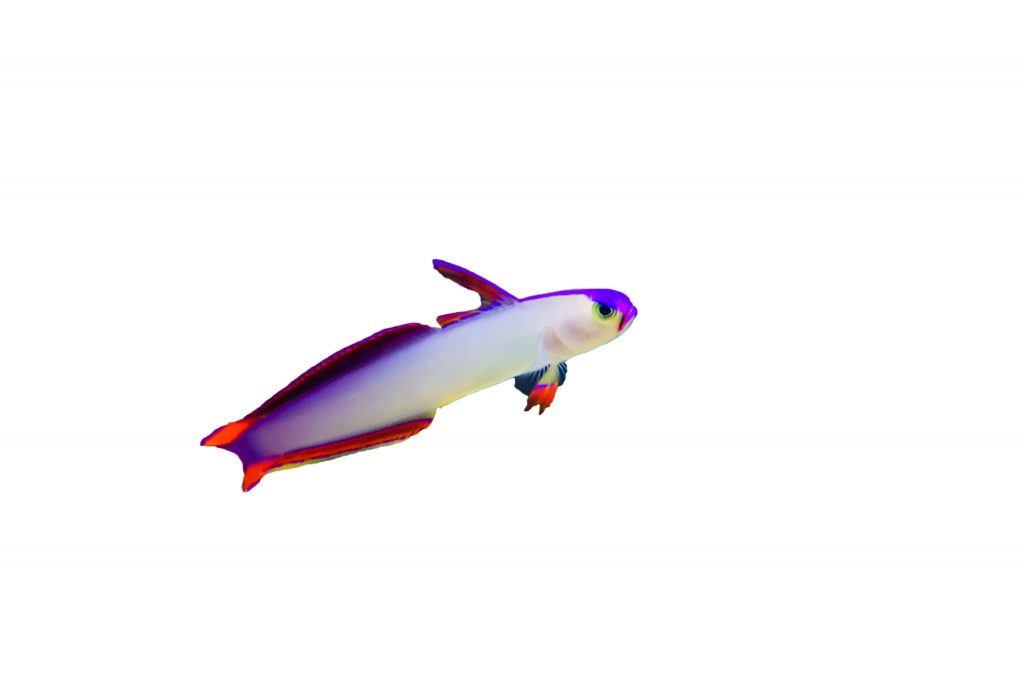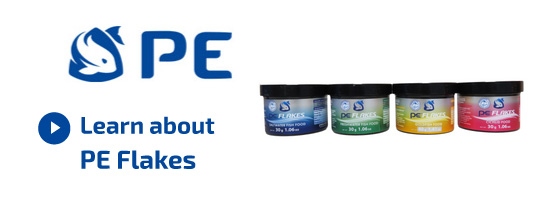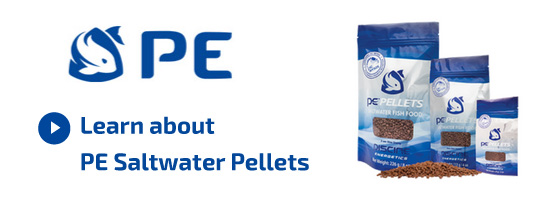Dartfish Species
Dartfish
Dartfishes are members of the Ptereleotrinae subfamily, encompassing seven genera. Dartfishes are a commonly kept aquarium species due to their small size, amenable personalities and bright coloration.
The Common Fire Fish (Nemateleotris magnifica) is one of the most commonly sold dartfishes in the aquarium hobby. Other commonly sold members of the dartfish family include the Purple Firefish, Helfrichi Fire Fish (Nemateleotris helfrichi) and Scissortail Dartfish (Ptereleotris evides).
Biology
Dartfishes are found in the Atlantic, Indian and Pacific Oceans. They can range in size from 2” (5cm) to 5” (12cm).
Dartfish tend to be found living in groups, hovering just above the substrate. They sped their days feeding among the water column but will quickly dart into the safety of their individual burrows, or bolt holes, at any sign of danger.
Captive Care
Dartfish can make great aquarium inhabitants provided their husbandry needs such as diet, water quality and tank space are met.
Dartfish prefer a temperature range of 72F (22C) to 80F (26C). Dartfish are generally considered reef safe. It is advisable to provide Dartfish with amble rockwork with plenty of caves. Additionally, Dartfish tanks should be well covered as they are known to jump when frightened.
It is important to consider carefully what species of dartfish may be best for your aquarium. While smaller species such as the Purple Firefish (Nemateleotris exquisita) are suited to tanks as small as ten gallons, larger species such as the Lined Dartfish (Ptereleotris grammica) may be better suited to a larger tank.
Suggested Piscine Energetics Products
We suggest a diet based on Piscine Energetics Mysis, Piscine Energetics Calanus, Piscine Energetics Pellets (1mm) and Piscine Energetics Saltwater Flakes.
What people are saying about PE:
After feeding my seahorses your mysis for about 3 months; they are fat and happy!!! they give me baby seahorses (at least 300 ) each 14 days... So I'm very satisfied of your mysis.The frozen mysis is about 70 per cent of their diet.
Yvan Charbonneau Quebec
I am keeping these Indian mudskippers -- very cute -- about 3-4 inches long. I've been feeding them frozen bloodworm, and decided to try them on mysis. I feed them in a "shallows" in the 150 I have set up for them. The minute the mysis hit the water they were on it, frozen and all. They gorged until their little bellies were almost bursting. I have yet to see an aquatic creature that does not go absolutely nuts over PE Mysis.
David Lass Massachusetts
I picked up my Mysis today and they arrived wonderfully. All the fish I fed them to, absolutely devoured them. They are my Frontosas new favorite food. All my Discus ate them up eagerly...heads and all!! I want to thank you again for your excellent service and product.
Pierre Brenton Nova Scotia
I have a large saltwater aquarium (220 gallons) with very expensive fishes and invertebrates. I tried to feed them with your PE Mysis and they really went crazy about it. Since that time, some of my fishes refuse any other product I offer them!






